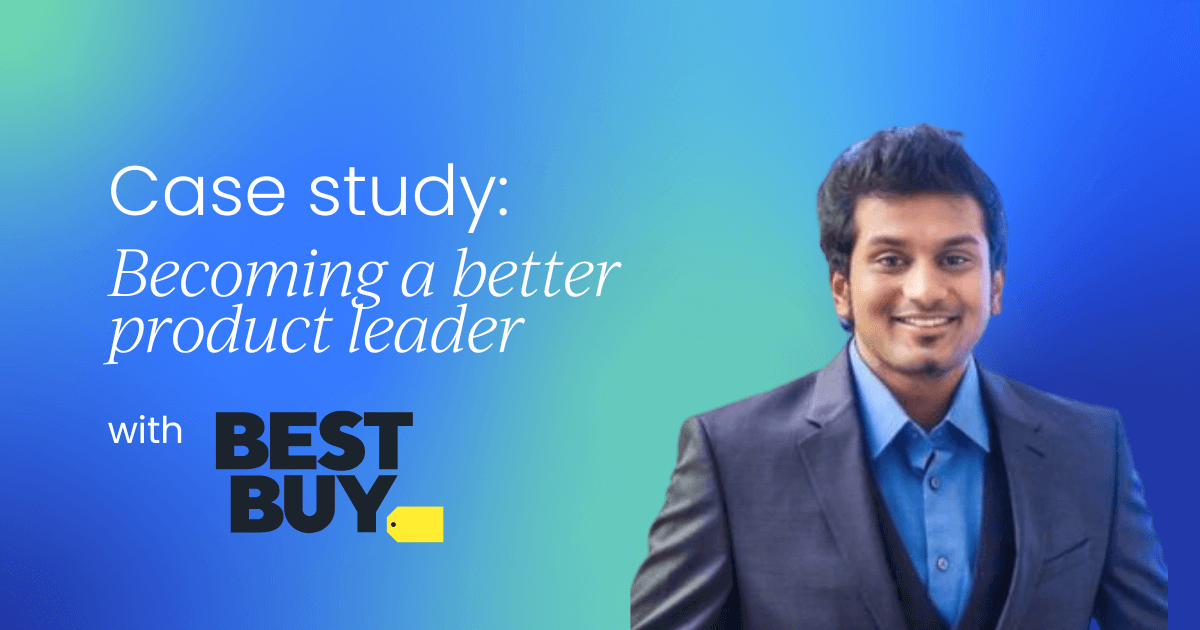Meet Janardhana Siddhartha Saladi, a seasoned product leader with over a decade of experience under his belt. Not only does he curate a popular newsletter with over 9,000 subscribers, but he also hosts the "Everything Product" podcast, where he shares invaluable insights on product management.
Today, we hear all about Janardhana’s contributions to PLA and the way the community has inspired him as a product leader. Join us as we delve into his journey and uncover how his expertise has helped shape the community and advance product management practices.
Hear what he has to say about PLA.
Community
As a product leader, I'm always looking for ways to learn and grow. I was drawn to PLA's focus on product-led growth and the caliber of its community members. I wanted to connect with other product professionals, share my experiences, and learn from their insights. PLA seemed like the perfect place to do that.
I've really enjoyed the depth and breadth of the conversations happening in the PLA community. Whether it's in the webinars or the blog posts, there's always something thought-provoking and actionable. I appreciate how the community brings together product leaders from diverse backgrounds and industries, which leads to a rich cross-pollination of ideas.
Motivations
I recently wrote an article for my newsletter, “The Product Channel,” titled "0 to 1: Idea to Product," and gave a keynote speech on the same topic at the Vellore Institute of Technology (VIT) Technology Business Incubator (TBI).
Taking an idea from 0 to 1 and achieving product-market fit is the foundation for any successful product, but it's also one of the hardest things to get right. Having gone through this journey many times, including building a Universal automotive diagnostic tool at Bosch, creating Opticom 360 (an integrated AI-telematics platform), and now at Best Buy, I wanted to share a proven framework for finding and validating product ideas.
The key takeaways are to start with a deep understanding of your target users, build a minimal viable product to test your riskiest assumptions and iterate rapidly based on market feedback. It's also critical to have a clear definition of success and to measure the right metrics along the way. In my keynote, I shared several case studies of how I applied this approach to my own products to achieve breakthrough growth.
Building new connections and skills
PLA has connected me with product leaders from some of the most innovative companies in the world. I've had the chance to learn from experts in user onboarding, product analytics, growth experimentation, and more. These connections have been invaluable as I've worked on taking products from 0 to 1. I've been able to get feedback on my ideas, troubleshoot challenges, and learn from others who have successfully navigated the idea-to-product journey.
PLA has been a game-changer for my professional development. By engaging regularly with the community, I've been able to stay on the cutting edge of product best practices and trends. I've picked up new skills, frameworks, and mental models that have made me a more effective product leader.
For example, learning about the "jobs-to-be-done" framework through PLA helped me better understand user needs and design more compelling products. The connections I've formed have also opened up new career opportunities and partnerships.
Overcoming challenges
When I was working on Opticom 360, I hit a roadblock in the early stages of development. I wasn't sure if the product idea resonated with our target users and was struggling to define the core value proposition. I reached out to the PLA community for advice and got a wealth of helpful perspectives.
One member pointed me to a resource on conducting effective user interviews, which helped me uncover key insights I had missed. Another shared a template for crafting compelling value propositions. Armed with this guidance, I was able to refine the product concept and get buy-in from key stakeholders.
Contributions
I've contributed to the PLA community by participating in several Product-Led Alliance conferences, including speaking engagements and panel discussions. I regularly engage in discussions on the PLA Slack channels and forums, helping other members work through challenges related to user research, MVP development, product roadmapping, and more.
The connections and conversations have sharpened my own thinking, exposed me to new perspectives, and helped raise my profile as a thought leader in the product community.
Culture at PLA
The PLA community is incredibly welcoming, supportive, and growth-oriented. Everyone is here to learn and help each other succeed. There's a strong emphasis on experimentation, data-driven decision-making, and continuous improvement.
At the same time, the community has a fun, down-to-earth vibe. People aren't afraid to share their failures and challenges alongside their successes. There's a real sense of camaraderie and shared purpose.
PLA is uniquely focused on product-led growth, which sets it apart from more general product or tech communities. This focus allows for deeper, more actionable conversations and resources. PLA also has a more intimate, engaged feel compared to larger networks.
Why join PLA?
If you're passionate about building great products and driving growth, PLA is an incredible resource. You'll gain access to a wealth of knowledge, tools, and connections that can help you up your game as a product leader. More than that, you'll become part of a vibrant community of peers who will support you, challenge you, and celebrate your successes along the way.




 Follow us on LinkedIn
Follow us on LinkedIn



